Top speed 359 km/h Wingspan 29 m Cruise speed 333 km/h | Length 20 m Range 2,443 km Unit cost 31,000,000–31,000,000 USD | |
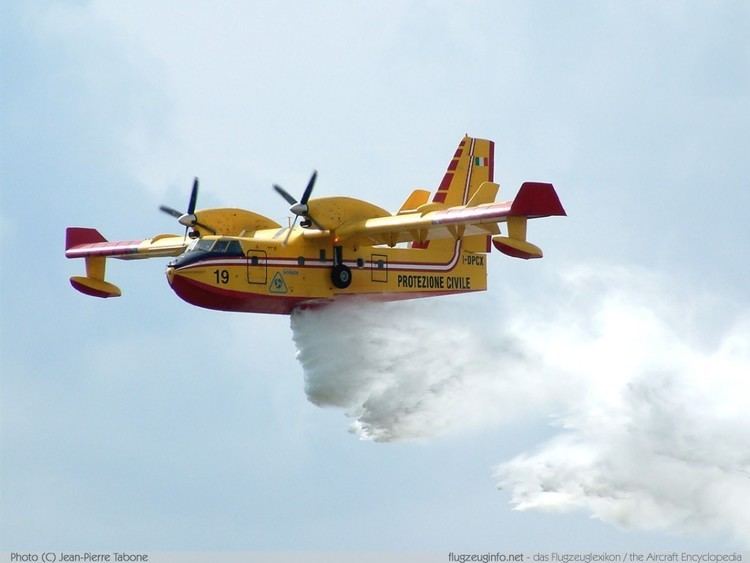 | ||
Engine type Pratt & Whitney Canada PW100 | ||
The Canadair CL-415, later known as the Bombardier 415, is an amphibious aircraft from Canada purpose-built as a water bomber. It is an aircraft designed and built specifically for aerial firefighting and is based on the company's CL-215. It is marketed in the United States as the "Superscooper."
Contents
- Canadair cl 415 rc seaplane not so plane sailing
- Design and development
- Operational history
- Variants
- Operators
- Specifications 415
- References

Canadair cl 415 rc seaplane not so plane sailing
Design and development
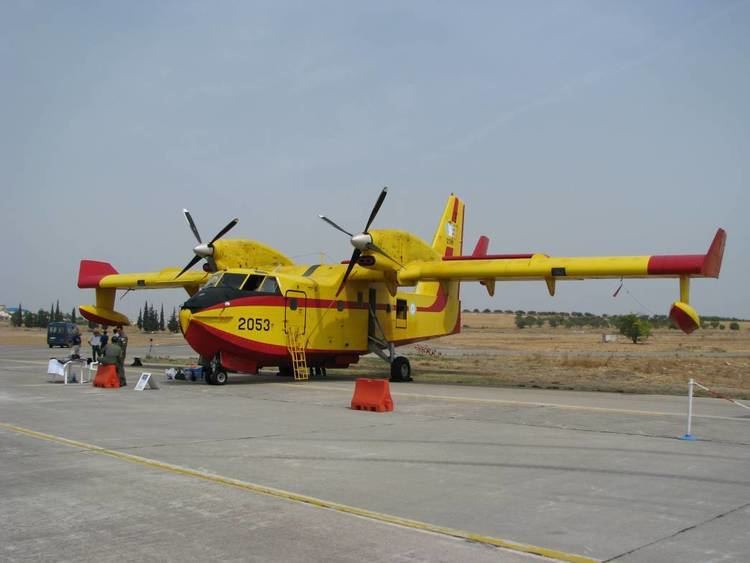
In 1987, following market trends towards more efficient, powerful and reliable turboprop powerplants, Canadair undertook the task of retrofitting 17 CL-215 airframes with the Pratt & Whitney Canada PW123AF engines, providing a 15% power increase over the original piston engines as well as enhanced reliability and safety. The retrofitted aircraft were designated CL-215T and also featured many aerodynamic and systems improvements including powered flight controls, cockpit air conditioning, as well as upgraded electrical and avionics systems. The most notable external features of the CL-215T retrofit were the aerodynamic additions to the wings and empennage.

Based on the success of the CL-215, the company introduced the CL-415, a new-build production series beginning in 1993. The CL-415 has an updated cockpit, aerodynamics enhancements and changes to the water-release system as well, creating a modern firefighting amphibious flying boat for use in detecting and suppressing forest fires.
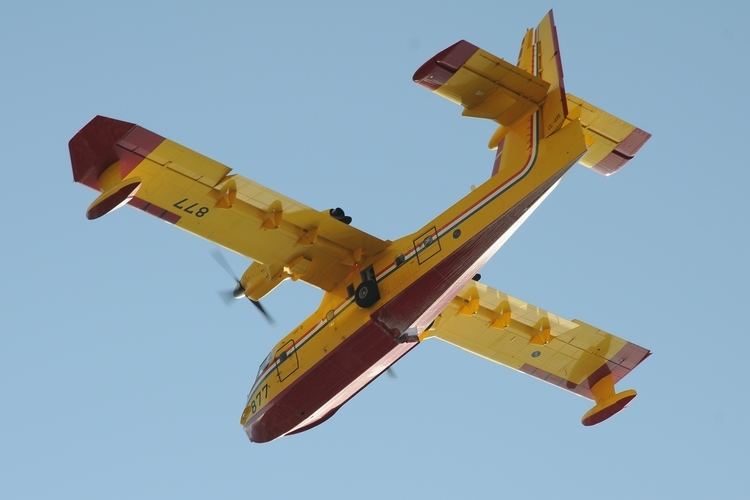
Compared to the CL-215, the CL-415 has increased operating weight and speed, yielding improved productivity and performance. The 415 can scoop up to 6,140 litres (1350 Imperial gal or 1,620 US gal) of water from a nearby water source, mix it with a chemical foam if desired, and drop it on a fire without having to return to base to refill its tanks. The CL-415 was specifically developed to provide the capability to deliver massive quantities of suppressant in quick response to fires. The aircraft is built for reliability and longevity, with use of corrosion-resistant materials. The new 415GR has higher operating weights while the CL-415 multi-role is available for use in a paramilitary search and rescue role and utility transport.
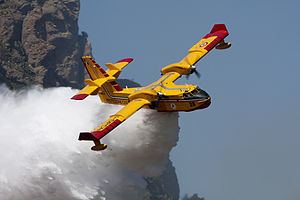
The CL-415 was assembled at the Bombardier Aerospace facility near North Bay/Jack Garland Airport in North Bay, Ontario, where the planes can be seen testing on Lake Nipissing. On June 20, 2016, Viking Air purchased the CL-415 type certificate from Bombardier along with the older CL-215 and CL-215T. The acquisition was finalised on 3 October.
Operational history
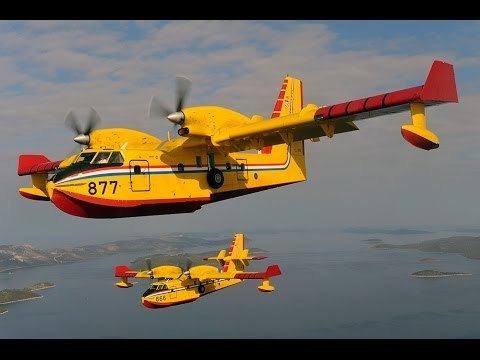
The CL-415 first flew on December 6, 1993, with the first deliveries in November 1994. Orders from several countries soon followed. Derived from its predecessor's nickname, it acquired the name, "Super Scooper" in light of its greatly enhanced performance as a water bomber and fire suppresser. In recognition of its abilities, the aircraft was awarded the prestigious Batefuegos de oro (gold fire extinguisher). The award citation in part read "This is the most efficient tool for the aerial combat of forest fires, key to the organization of firefighting in a large number of countries. The continuous improvements to meet the needs of forest firefighting have made these aircraft the aerial means most in demand over more than 30 years."
Of the 95 built, seven have been removed from service due to accidents.
The aircraft requires 1,340 metres (4,400 ft) of flyable area to descend from 15 metres (49 ft) altitude, scoop 6,137 litres of water during a 12-second 410 metres (1,350 ft) long run on the water at 70 knots (130 km/h; 81 mph), then climb back to 15 m altitude. The aircraft can also pick up partial loads in smaller areas and can turn while scooping, if necessary.
Variants
Operators
Specifications (415)
Data from Bombardier Aerospace Website
General characteristics
Performance
Avionics
